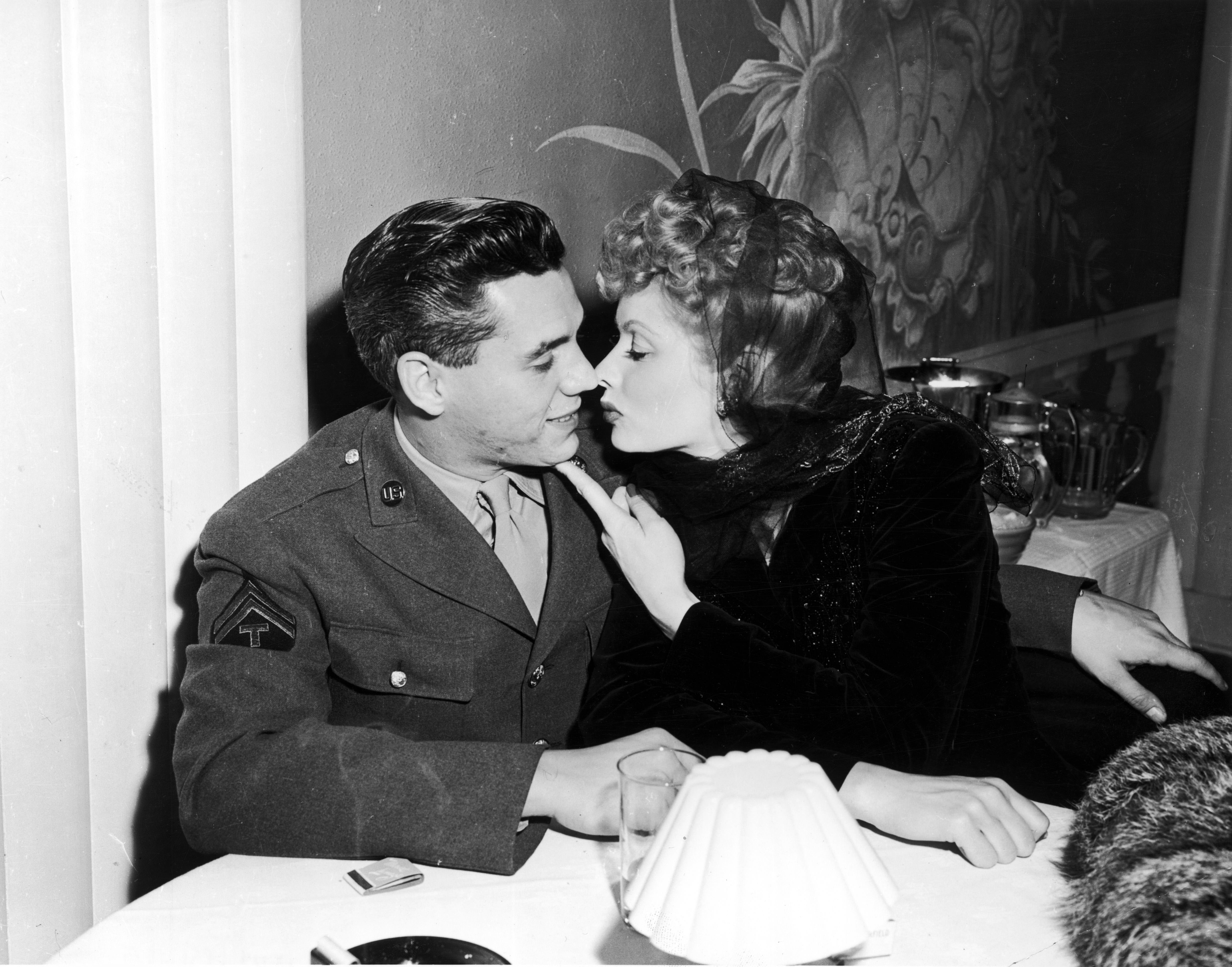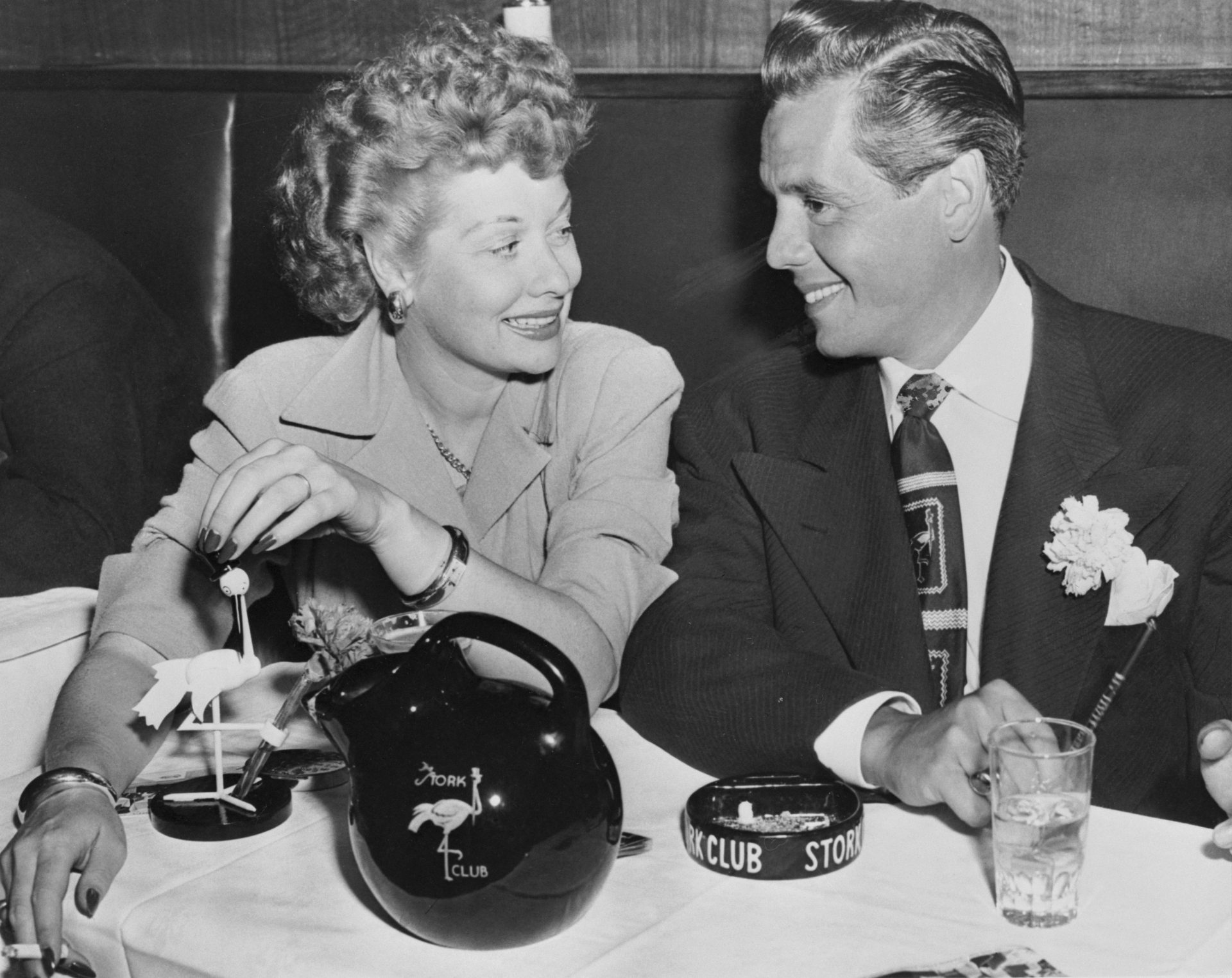Long before audiences fell for the on-screen magic of I Love Lucy, Lucille Ball experienced a jolt of recognition that would change her life and American pop culture. When she first laid eyes on Desi Arnaz, she felt a pull so immediate and undeniable that it set the course for everything that followed. That first impression was not simply attraction; it was a clear sense of where her future was headed.
The Musical Moment That Put Desi Arnaz on Her Radar
Ball first learned of Arnaz through the musical comedy Too Many Girls. The production was a sensation, and the press raved about its energy, rhythm, and star power. In that spotlight, Arnaz stood out as a charismatic front man with a magnetic stage presence that drew instant attention.

Women flocked to see him, and his popularity soared. The buzz around his performances was electric, the kind of frenzy that often surrounds a modern pop icon. Offstage, his social calendar kept pace with his fame; he mixed with film stars, stage favorites, and high-society debutantes. Simply put, he was the man everyone noticed, and for good reason.
A Stage Presence She Could Not Ignore
When Ball saw Arnaz perform for the first time, she found herself transfixed. She watched him move with athletic ease, the kind that exudes confidence without saying a word. The wardrobe added to the effect: a snug striped jersey that emphasized his shoulders, paired with trim football pants and a bongo drum slung in hand. He carried rhythm as naturally as he carried himself.
Ball recognized something rare and unmistakable in that instant. It was the spark of star quality, the sort of charge that never feels manufactured. That combination of music, movement, and charm made her look twice, then three times. She was not just captivated; she was convinced she was witnessing a talent with staying power.
Humor, Heart, and a Laugh She Could Not Hold Back
The visual magnetism was only the beginning. When Arnaz spoke, his warm humor and accent tumbled together in a way that disarmed her completely. Ball prided herself on a discerning sense of comedy; it took a lot to make her laugh out loud. Yet his playful delivery and lightly fractured English broke through her reserve in seconds.
That laugh mattered. It told her she was not only dazzled by his looks and stagecraft; she was genuinely entertained. For Ball, whose career was built on timing and wit, finding someone who could surprise her comedically was no small thing. It signaled compatibility at the level that counts most for performers: shared rhythm, shared delight, shared instinct.
From the RKO Lot to a Night of Nonstop Conversation
Their first meeting took place on the RKO lot, where introductions sparked immediate chemistry. Arnaz asked her to dinner, and the date became all about conversation. Rather than joining in on the dance floor or the conga line, they tucked into a small table and talked for hours.

Ball felt an instant shift. She later admitted she fell fast, and it was not just about appearance. The more they spoke, the more she recognized that his energy matched hers. The banter flowed, the stories landed, and the connection deepened. Looking at him felt thrilling, but talking with him felt even better. That is when infatuation began to look like destiny.
Hollywood Warnings and a Choice of the Heart
Their attraction did not go unnoticed on the studio lot. Colleagues cautioned Ball to take a step back. Some dismissed Arnaz as a temporary sensation. Others pointed to their age difference. A few flagged their different religious backgrounds as a potential obstacle. The chorus of advice was loud and persistent.
Ball heard it all and moved forward anyway. She knew what she felt, and she trusted it. The clarity of her decision came from the strength of their connection and the confidence she held in her own instincts. Instead of retreating, she committed. That certainty would shape not only their partnership but also the most beloved sitcom of the era.
The Magnetism of Desi Arnaz in Context
Arnaz did not arrive in Hollywood as a conventional leading man. He led with rhythm, charisma, and a signature musicality that felt new to mainstream audiences. The conga craze, the bongo pulse, the Latin-infused band sound—he brought it all into the spotlight and made it irresistible. That blend of showmanship and warmth resonated far beyond the stage.
Ball, a seasoned observer of talent, sensed the cultural moment as much as the man. Audiences craved fresh energy, and Arnaz delivered it. He was modern yet approachable, suave yet playful. That duality explained why the public could not get enough—and why Ball saw, with uncommon clarity, the promise of a star who could do more than perform. He could connect.
Two Performers, One Rhythm
What truly bonded Ball and Arnaz in those early days was cadence—the interplay of tempo, laugh, and timing. Her comedic sensibility met his musical momentum, and the result felt effortless. The way they listened and responded to each other created a dynamic that later lit up television screens. Their chemistry was not only romantic; it was creative, kinetic, and deeply collaborative.
That is why their first conversations mattered so much. They did not just trade compliments; they found a shared pulse. In show business, where timing can make or break a moment, they discovered they moved in sync.
How a First Impression Became Pop Culture History
Looking back, Ball’s immediate reaction to Arnaz reads like a preview of their legacy. She recognized something real and chose it over the noise of doubt around her. The effect rippled outward—into a marriage that was passionate and complicated, and into a creative partnership that redefined television comedy. Viewers saw the laughter and the spark, and they believed it because it was born of something genuine.
Why This Matters Today
We still talk about that first meeting because it captures a rare moment when intuition, talent, and opportunity align. Ball trusted her gut. Arnaz lived fully in his art. Together they created a blueprint for on-screen chemistry that still inspires performers and producers. Their story reminds us that great partnerships often begin with a flash of recognition—and that sometimes the loudest warnings cannot outweigh a clear, undeniable yes.
